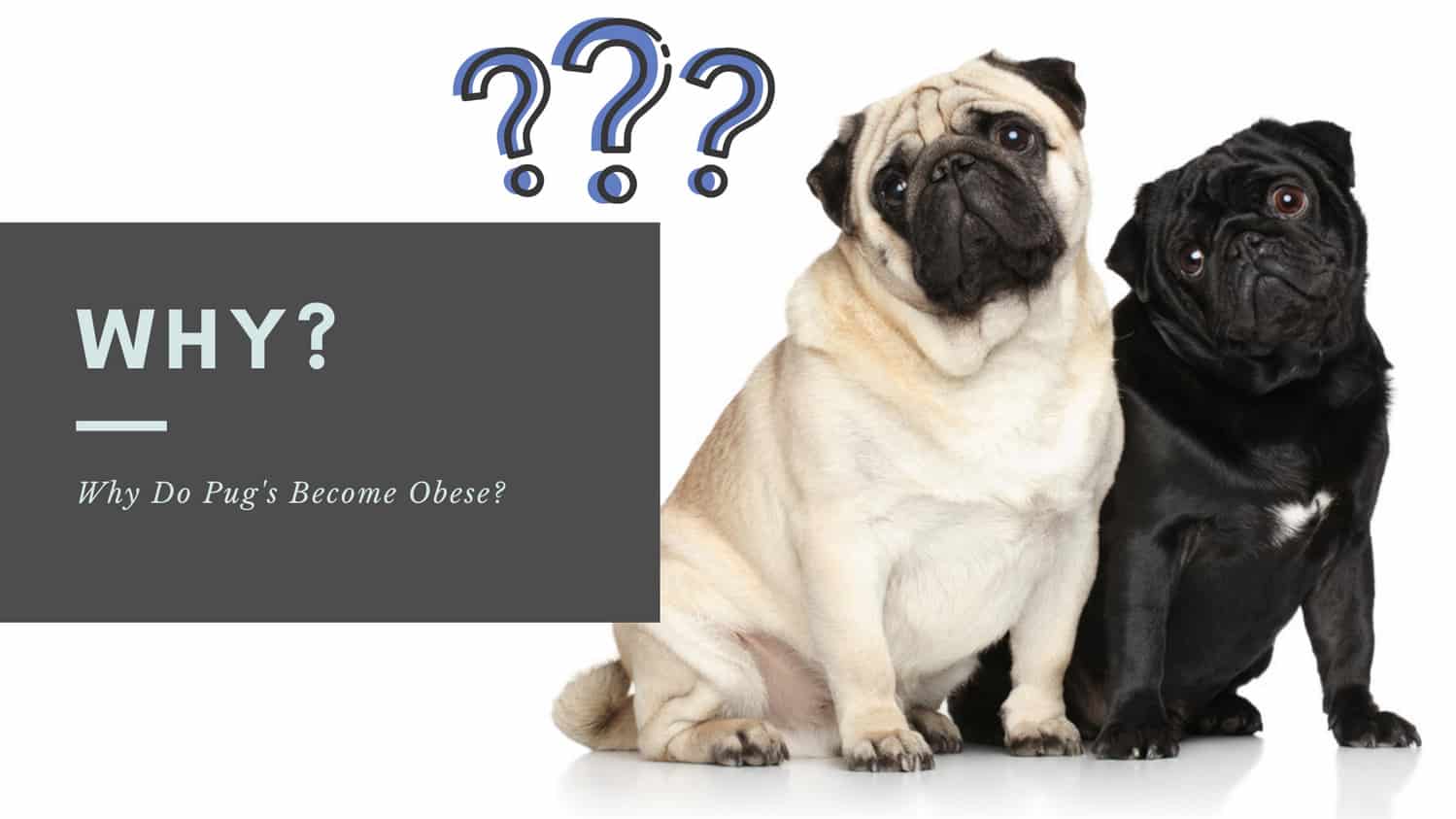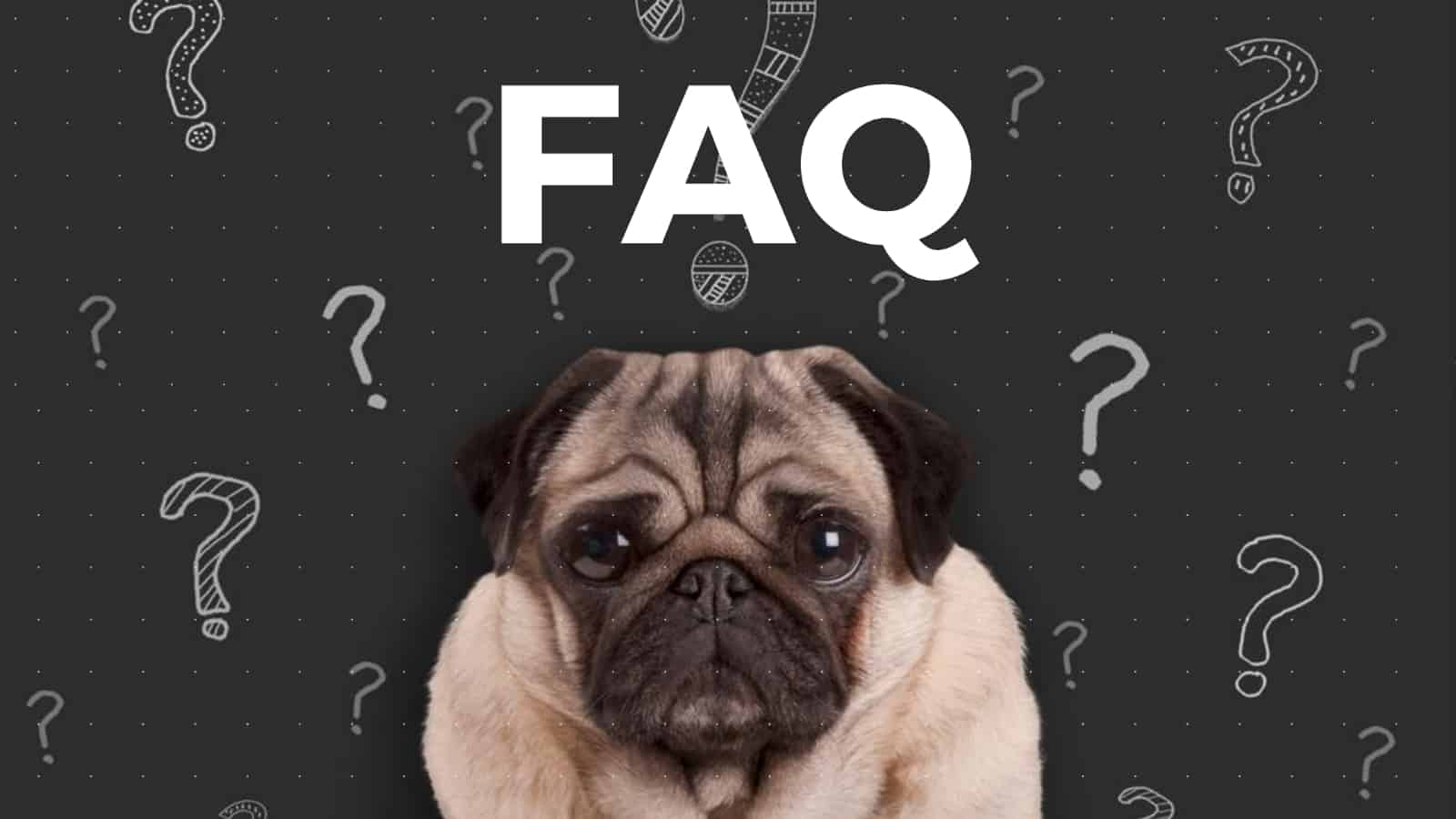As a pug owner, it’s normal to be worried about your pug being overweight.
Pugs are heavy eaters and lazy dogs, so it’s easy for them to become obese.
However, it’s normal to think that your pug is overweight when they’re not because of their unique shape.
If you want to know the ideal weight of a pug, signs that your pug is obese, how to help a pug maintain a healthy weight, among other things; be our guest.
What’s the Average Weight for Pugs?
According to American Kennel Club, the average weight of a Pug is 14 to 18 pounds with a 10-13 inches body, your pug may still weigh more while being healthy.
But there are more details you should learn about the average weight of Pugs:
- Age & Pugs’ Weight
- Gender & Pugs Weight
1. Age & Pugs’ Weight
The age of a pug may determine the weight of your pug. Here is how much a pug should weigh at different stages:
- The average weight for a newborn Pug
The average weight of a newborn pug should range between 75g to 350g. Within 7 to 10 days, your pugs’ weight might double.
Also during these first days, your pug’s body weight will increase by at least 5-10% every day.
For the runts in the litter, they will grow at a slower rate, and ideally gain at least 5 ounces per week.
- What about a 6-month-old Pug?
At six months, your pugs should weigh between 7 and 12 pounds.
However, puppy Pugs grow very fast compared to other large dog breeds.
They’re likely to reach their ideal weight when they’re between 8-12 months.
Here is an ideal Pug weight chart at different ages:
| A Pug’s Age | Average Pug’s Weight |
| 8 Weeks | 4lbs ( 1.814kg) |
| 9 Weeks | 4.5lbs (2.041kg) |
| 10 Weeks | 5lbs (2.268kg) |
| 11 Weeks | 5.5lbs (2.495kg) |
| 12 Weeks | 6lbs (2.722kg) |
| 13 Weeks | 6.5lbs (2.948kg) |
| 14 Weeks | 7lbs (3.175kg) |
| 15 Weeks | 7.5lbs (3.401kg) |
| 16 Weeks | 5 – 8lbs (2.268 – 3.629kg) |
| 5 Months | 11lbs (4.990kg) |
| 6 Months | 12lbs (5.443kg) |
| 7 Months | 15lbs (6.803kg) |
| 8 Months | 17.5lbs (7.938kg) |
| 9 Months | 19.5lbs (8.845kg) |
| 10 Months | 21.5lbs (9.752kg) |
| 11 Months | 22.8lbs (10.341kg) |
| 12 Months | 22.8lbs (10.341kg) |
- Adult Pugs
When a Pug reaches 1 year old, he becomes an adult with a fully grown body.
The healthy weight of an adult Pug is up to 21 pounds or 9.52kg (1 or 2 lbs difference).
If your furry friend keeps gaining after this age, you should be cautious as this might end up with an overweight dog.
- Senior Pugs
Most vets claim that a dog reaches its senior period at 7 or 8 age (no more than 9).
Your Pugs might be lighter since when they grow older, because they start to lose muscle at a senior age.
However, that’s not a fixed dimension to determine whether your senior pugs are overweight.
You should pay a lot of attention to their diet and exercise plan to keep them healthy.
2. Gender & Pugs Weight
If you have a male and female pug of the same age, you might realize that they are slightly different in weight and height. This is normal for many dog breeds.
On average, most male pugs will weigh between 20 and 30 pounds, and be 10 to 14 inches high.
A female pug will weigh between 18 and 28 bounds, and be 10 to 12 inches high.
Why Do Pug’s Become Obese?
There are many reasons that can lead to a pug putting on excessive weight. However, in most cases, it’s a combination of the following:
- Overfeeding
Pug’s love to eat, and they’ll eat about anything you offer them, and still beg for more.
This can’t be called overeating because if you fed them the right amount of food, nothing wrong would happen.
- Lack of Exercise
Due to its structure (short legs) and it’s difficult breathing conditions during hot, humid weather, it is very hard for pugs to exercise.
However, no exercise can lead to increased weight as their calories can exceed the amount of fuel their bodies burn out.
- Age
The metabolism of all living things decreases as they get older.
And although an older pug requires fewer calories, it’ll still have a huge appetite.
This weight gain might seem insignificant, but it might pile up with time resulting in obesity.
Is My Pug Overweight?
As we mentioned earlier, when it comes to pugs, you can’t simply judge whether they’re overweight or not by the scale.
Here are signs that your pug is obese:
1. You Can’t Feel Your Pug’s Ribs
Pugs have very thin skin, so you should easily feel their ribs under their skin.
If you can’t feel their ribs, there is a chance that your pug is overweight.
On the other hand, if you can see your pug’s ribs when they’re in their normal standing position, your pug may be underweight.
2. You Can’t See Their Waistline
Just like human beings, pugs have a waistline. And while it might not be well-pronounced like the other dog breeds, it should be visible if you check your pug top down.
If your pug has a rounded shape, it’s possible your pug has a lot of fat and needs to lose weight.
3. Your Pug is Visible Heavy
It may be hard for you to spot any changes on your pug because you’re used to seeing them.
But a third party can spot an overweight pug as they’re unbiased. An obese pug will have an uncomfortable or bloated appearance.
4. Your Pug is Developing Mobility Problems
If your pugs are putting on so much weight, they might begin having mobility difficulties.
For example, you may realize they’re struggling climbing the sofa that they were climbing effortlessly before.
Other things that may indicate your pug is having mobility issues include:
- Lack of motivation to do something they were initially enjoying
- Struggling to climb stairs
- Problems rising to their normal standing position
- Slow labored gait
- They no longer play
Should I Worry About My Pug’s Obesity?
Just like human beings, carrying extra weight can harm your pug’s health.
Here are some dangers of a pug’s obesity:
1. Mobility Issues
As mentioned before, the extra weight makes it difficult for a pug to walk as it may hurt their joints.
For this reason, your pug may only want to lie down, which could result in more health problems.
2. It Could Worsen their Breathing Problems
Brachycephalic dog breeds (including pugs) suffer from breathing problems because of their small nasal passages.
Having extra fat around the neck, face, and chest may make breathing even more difficult.
3. A Strain on Your Pug’s Body
Being overweight can cause tension on the bones and joints, affecting the back, knees, and hips.
If this isn’t taken care of in good time, your pug may develop bone and ligament damage.
4. Low Immune
An obese pug is prone to diseases than a healthy pug, and they’re at a higher risk of health problems such as:
- Cancer
- High blood pressure
- Type 2 diabetes
- Heart & respiratory issues
- Kidney disease
5. Reduced Life Span
Just like human beings, obesity can shorten a pug’s life span.
This means instead of living up to 16 years (which is the average pug’s lifespan), their life may be cut short to between 8-24 months.
Besides the short life span, your pug’s life quality is reduced as they struggle with their daily activities, making them miserable.
6. Skin and Coat Problems
Normally, pugs are prone to skin problems because of the folding in their coats, which could harbor bacteria.
When your pug is overweight, they’re at a higher risk of developing skin diseases.
7. Trouble with Grooming
When a pug puts on too much weight, they become rounder making it hard for them to reach some spots that they may want to clean or scratch.
This can be very uncomfortable for them.
My Pug Is Overweight: How Do I Help Them Lose Weight Safely?
One of the challenges of a pug’s weight loss journey is that they’re food lovers and poor at exercising.
With that said, there are still easier ways of helping your pug lose weight. They include:
1. Proper Feeding
What you feed your pug is very critical. Here is how to make sure you feed them well:
- Buy your pug the right food.
You need to focus not only on feeding your pug but nourishing them as well.
Not all dog foods are suitable for your pug. Some have messed up macronutrients that may increase your pug’s weight gain.
Pick food with a recipe that energizes them and has the right ratios of proteins, carbohydrates, and fats to keep your pug lean.
- Switch from Normal Food to Foods for Obese Pugs.
The food is labeled as ‘low-fat’ or ‘healthy weight’.They are high in protein and fiber and low in fats.
Alternatively, you can feed your fat pug with low-calorie ingredients such as raspberries, blueberries, kales, spinach, and green beans.
20-30% of a pug’s calories are from the treats they eat. Therefore, it’s essential to switch from carby to nutritious or treats for obese pugs.
The best treats for a pug are low calories, low carbs, and low fat.
2. Playtime/ Exercise Time
Although pugs aren’t very sporty, if your pug is obese, you’ll need to exercise them daily.
However, you’ll need to observe them very carefully to ensure all their needs are met during playtime.
To do this:
- Ensure your pug is well dehydrated
- Be keen on any signs of heat stress and allow them to rest once in a while. A cooling vest for pugs can help keep your pug cool.
- Exercises your pug during the hours when the sun rays aren’t strong
- Start with a mild-faced 15 minutes’ walk and increase the hours and pace as they adjust.
3. Health Check
If you suspect your pug is overweight, take them to the vet before starting any weight-loss tactic.
This will allow the vet to examine them for any ailments than an obese pug may have.
And offer medication to regulate the conditions as a start in controlling their weight gain.
How Fast Should a Pug Lose Weight? NO Crash Diet
This depends on your pug’s current weight and how important it is for them to cut on the weight.
If your pug weighs like 40 pounds, then they can lose up to 5 pounds every month.
However, if it’s not critical for them to lose weight, it’s best to take the long way of losing 0.5 to 1 pound.
You can achieve this by being consistent with both diet and exercise.
Bonus: Signs That Your Pug is Underweight
Although this isn’t a common topic as overweight pugs, it’s important because sometimes pug owners go too far when they’re trying to make their pug lose weight.
Here are signs that your pug is underweight:
- You can see the ribs clearly when they’re standing in their normal position
- Your pug’s muscle stands out differently especially on the rear legs
- Your pug’s knobby bumps of the spine are showing along their back
If your dog is showing these signs, you might be feeding your pug very little food or they may be suffering from other ailments. Visit the vet immediately.
FAQs
1. Is it normal for my male pug to weigh more than my female pug?
If your male pug is outweighing your female pug, there is nothing to worry about.
For many dogs (pugs included), it’s normal for males to be heavier than females.
2. What’s the average weight of an older pug?
14- 18 pounds. However, your pug may still be 20 pounds and be healthy if they can comfortably carry their body
Final Thoughts
When you’re a pug parent, it’s your responsibility to make sure they’re exercising enough and eating the right food.
We understand that pugs appear hungry all the time as they’re food lovers, and you might be tempted to feed them several times a day.
However, you got to practice tough love and learn to say no for their sake.
For pugs who are already obese, all hope isn’t lost. Adjusting their diet and exercising them can help reduce their weight.
If you loved this blog, feel free to share the article with other pug parents.



